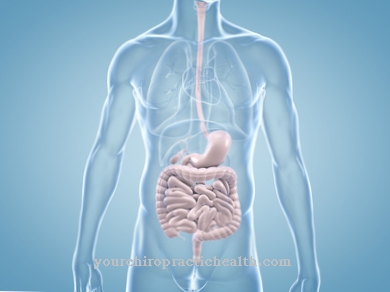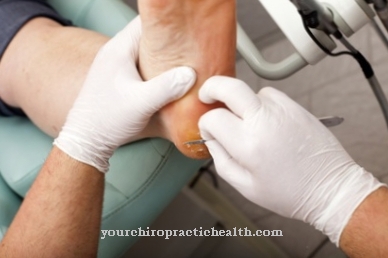Spleen pain can be a symptom of many diseases or an inappropriate lifestyle. As an organ, the spleen fulfills various functions in the body, but it is not a vital organ. Symptoms of the spleen are always an indication of a disturbed function of this organ.
What is spleen pain?

Spleen pain is usually very sudden and unexpected. In most cases they are noticeable in the lower abdomen below the navel, but can also radiate into the upper abdomen and from there into the left shoulder.
This pain can be permanent or recurring. Spleen pain is often felt to be stabbing and has a colic-like appearance. How severe the complaints are can be completely different. Spleen pain can occur along with other symptoms such as tiredness, nosebleeds, rapid heartbeat, and swollen lymph nodes.
The symptoms and intensity depend on the cause of the discomfort. The spleen is a filter in the human bloodstream and also part of the immune system. Nevertheless, it is not a vital organ and humans can do without it if the causes of spleen pain make it necessary to remove the spleen.
causes
The reasons for spleen pain can be very different. Although the spleen is a very small organ in our body, the pain can be extremely severe.
A common cause of spleen pain is inflammation, some of which can be triggered by infection. Trauma or other mechanical impacts can also cause spleen pain, e.g. an accident causes a tear in the spleen or spleen congestion. Spleen pain can also result from malfunctions or diseases of the metabolism or from the formation of tumors in the spleen.
Other causes of pain in the spleen can be sickle cell or thalassemia, arthritis caused by rheumatism, or a splenic infarction resulting from a circulatory disorder. In leukemia, the organ can enlarge, which can lead to spleen pain. But other underlying diseases can also lead to an enlarged spleen.
You can find your medication here
➔ Medicines for stomach ailments and painDiseases with this symptom
- Thalassemia
- leukemia
- rheumatism
- Splenic infarction
- Inflammation of the joints (arthritis)
- Circulatory disorders
Diagnosis & course
When diagnosing spleen pain, it is best to go to a specialist (family doctor or specialist in internal medicine). He will question the patient in detail about the symptoms and, depending on the description, initiate further measures.
The physical examination includes palpation of the upper and lower abdomen to determine the exact location and intensity of the pain. During this scanning, an enlargement of the spleen can be detected, only an enlarged spleen can be felt in this way. An ultrasound or computed tomography can be performed for a closer examination.
This provides detailed records of the spleen and reliably indicates changes in this organ. Examining various blood parameters can also provide information about the cause of the pain. The healing of spleen pain is completely different, depending on the cause. There are medicinal and invasive options to choose from.
Complications
Spleen pain can be caused by an enlarged spleen (splenomegaly), which has various causes. This is the case, for example, with cirrhosis of the liver or hepatitis. These diseases can easily develop into liver cancer, which has a poor prognosis. The tropical disease malaria also causes an enlarged spleen and thus pain.
Malaria can spread to the brain and lead to seizures and even coma. It also leads to coagulation disorders and kidney or lung failure. The greatly enlarged spleen can, in the worst case, lead to a rupture in the spleen and thus to heavy internal bleeding, which can turn into a shock that is life-threatening.
Blood diseases such as leukemia or anemia can also cause the spleen to enlarge and trigger various complications. Complications of leukemia mainly concern disorders of the formation of the individual blood cells. This makes the organism more susceptible to infections and has impaired blood clotting. If left untreated, anemia leads to a marked decline in performance and chronic fatigue.
Rheumatoid arthritis can also cause spleen pain. This autoimmune disease primarily affects the joints and causes severe joint pain. The heart muscle can also be affected and become inflamed. In addition, the risk of developing osteoporosis is increased.
When should you go to the doctor?
Pain in the spleen area indicates a serious underlying condition and always requires immediate medical clarification. A visit to the doctor is particularly recommended if the symptoms are increasing rapidly or spreading over the left breast to the shoulder region. Pain in the left side of the body, especially around the stomach or left costal arch, suggests an enlarged spleen or other condition of the spleen that needs immediate treatment.
Other warning signs of spleen disease are paleness, exhaustion, and fatigue. If there is an accompanying fever, the ambulance service should be called. A splenic infarction may be imminent, which if left untreated can be life-threatening. Mild spleen pain should also be medically clarified if the cause is unknown, the pain is associated with side effects or if it has any other negative effect on the general condition. A feeling of pressure in the chest indicates an enlarged spleen, which must be checked by a general practitioner. Other contacts are the gastroenterologist and other internal medicine doctors.
Doctors & therapists in your area
Treatment & Therapy
Spleen pain is treated depending on its cause. Some diseases can be treated with medication, in other cases an operation and thus the removal of the spleen is unavoidable. A spleen removal is usually an option if the spleen is greatly enlarged or tumors have formed.
This operation is performed under general anesthesia. The upper abdomen is opened on the left side and then all connection points between the spleen and the body are severed. After the spleen has been removed, a drain is placed and the abdomen is closed again.
There is now a minimally invasive way of removing the spleen. In this case, the patient also has to be put under general anesthesia, but the actual procedure is much gentler. The abdomen of the person affected is inflated with CO2 and then the spleen is removed with small instruments through tiny incisions. The doctor follows this procedure with a small camera, which is also inserted through an incision in the abdomen. Drainage is then necessary so that wound fluid and blood can drain off. This type of spleen removal is called laparoscopy.
People who have to live without a spleen are at increased risk of infection and should therefore adopt a healthy lifestyle and get regular vaccinations.
If the spleen pain occurred because of an illness, it is important that the underlying illness is treated. This will also improve the problems with the spleen.
Outlook & forecast
In most cases, there is severe swelling with the spleen pain. The patient suffers from dizziness, headache and often from a fever. Many people's skin looks pale. In addition, the symptom can be accompanied by problems with the heart and general tiredness.
The pain in the spleen can cause shock. In this case, the spleen must be removed completely, as the immune system is severely weakened. In the worst case, severe blood poisoning can occur due to the weak immune system. Certain toxic substances that enter the human body can no longer be excreted properly and can migrate to different regions that are severely damaged.
However, spleen pain can be treated relatively well. Not only drugs but also surgical interventions are used. If the spleen pain occurs due to another disease, the respective cause must be treated. In most cases, the treatment leads to a positive course of the disease without further complications and complaints.
You can find your medication here
➔ Medicines for stomach ailments and painprevention
Spleen pain cannot be prevented 100%. However, a healthy diet and sufficient exercise are always the best means of keeping the body healthy. The diet should be varied and balanced, exercise ensures a good circulation and also strengthens the immune system.
You can do that yourself
Most often, pain in the spleen is associated with an injury. An immediate medical examination is necessary here. Symptoms can be alleviated in the case of short-term or permanently enlarged spleen caused by an infection, as well as spleen swelling.
Chinese medicine recommends a "spleen diet": slightly sweet and bitter foods - especially fennel, cinnamon, coriander and cloves - should be consumed. These foods stimulate the metabolism and support the spleen in its work. Only a few medicinal plants are known in western cultures that specifically support the spleen. But here, too, there are plants with a high bitter content, for example: wormwood, dandelion or gentian. Those affected also achieved relief by taking homeopathic remedies such as Ceanothus americanus or Schüssler salts such as Kalium sulfuricum (main remedy), Magnesium phosphoricum (side stitch), sodium cloratum and Silicea in the case of hardening of the spleen.
Alternative medicine also tries to support the body by taking micronutrients, including: selenium, to reduce inflammation, B vitamins and zinc. Amino acids such as arginine and taurine are also said to support the spleen.
In the case of chronic and rheumatic complaints - which can also be the cause of pain in the spleen - the acid-base balance should also be balanced. An excess of acid in the body accelerates inflammatory processes. The influence of sick or dead teeth on the organism is underestimated. In the case of chronic complaints, it should be clarified whether there are interference fields (amalgam fillings).













.jpg)

.jpg)
.jpg)











.jpg)